
Wild Peruvian root touted for life-extending & libido boosting properties
There’s some media buzz building about yet another re-discovered Peruvian super-food that researchers say is packed with protein, calcium, potassium, and phosphorus, plus a libido booster similar to — if not more powerful than — Maca.
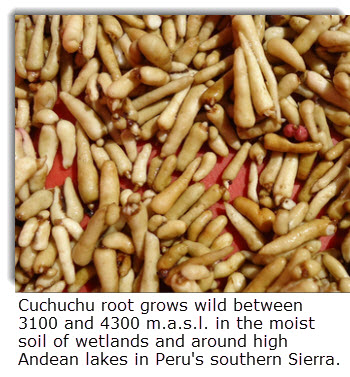
The wild growing root in question is known as Cuchucho.
Researchers at the Peru’s National Agrarian University La Molina (UNALM) say they believe daily consumption of the root contributes to increased longevity.
They point to the outlying hamlets of Ilave in the Collao province of Puno, near Lake Titicaca, where the root is commonly eaten. There, people are reportedly known to remain sexually active into older than average age and many live to be more than 100.
Local news reports are light on specific scientific data, however. It also should be stressed that knowledge of this tuber’s nutritive and aphrodisiac properties is nothing new.
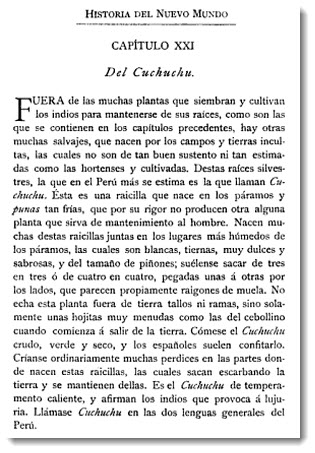
Father Barnabé Cobo, the 17th century Spanish Jesuit chronicler, wrote that of all the wild edible roots of the high Sierra, “the one in Peru which is most prized is called Cuchuchu …. and the Indians affirm that it provokes lust.”
Cuchuchu (also known as Cuchucho or Kuchucho) grows wild between 3100 and 4300 m.a.s.l. in the moist soil of wetlands and around high Andean lakes, including Titicaca (Puno), Parinacochas (Ayacucho), and Chinchaycocha (JunÃn), among others.
There is an Aymara saying: “Cuchucho q’acha saytayiriwa anisiñataki” (the Cuchucho serves to awaken lust, and then make love).
The head of La Molina’s tubers program, Vidal Villagomez, was quoted saying that Kuchucho has revitalizing sexual properties more powerful than Maca, particularly for the older folks.
The revitalizing properties for sexual activity in the golden years made it a very popular supplement among Spaniards and mestizos during the 16th and 17th centuries, and over-consumption nearly drove the plant to extinction, according to a 2002 agricultural report sponsored by CARE-Peru.
You Might Also Like: Ayacucho 4 Days
“But the highland communities valued its extraordinary nutritional properties and knew how to preserve it in its wild state,” Villagomez said. “However, as with many of the plants that make up the vast genetic wealth of Peru, the Kuchucho remained unknown to the rest of the population and only in recent years has it begun to be studied with scientific rigor. That has uncovered its enormous naturally nutritious and invigorating potential.”
The root is eaten fresh or dried and said to have a sweet, nutty flavor.
In the high Andean communities, where it is eaten, Kuchucho is typically harvested, along with other food and medicinal plants, in April, especially on Good Friday.
Hopefully, hype about the renewed study of Kuchucho will lead to a sustainable development and marketing of the root, and won’t open the floodgates to legions of bio-prospectors hoping to cash in on Peru’s newest bounty.
If you like this post, please remember to share on Facebook, Twitter or Google+
 Peruvian Guinea Pig Recipe Is Actually Delicious!
Peruvian Guinea Pig Recipe Is Actually Delicious! 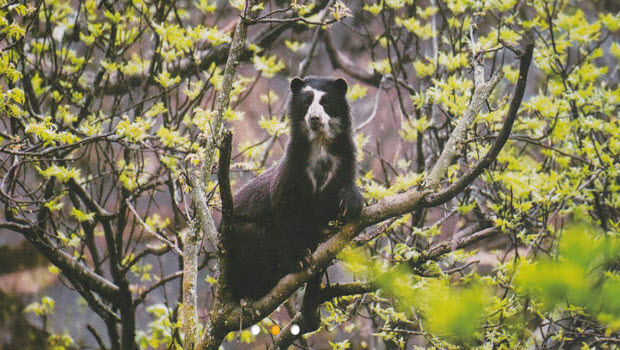 Top Five Wanderlust Wishlist for 2012
Top Five Wanderlust Wishlist for 2012  Happy Easter 2012 from Fertur Peru Travel
Happy Easter 2012 from Fertur Peru Travel  Maca is climbing the charts as a nutritional supplement
Maca is climbing the charts as a nutritional supplement 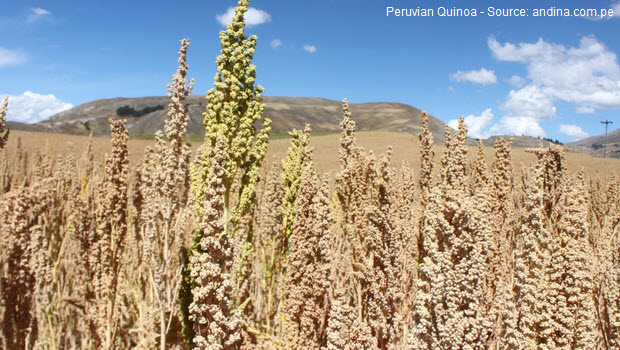 Quinoa is the best-known of the “Inca grains”
Quinoa is the best-known of the “Inca grains” 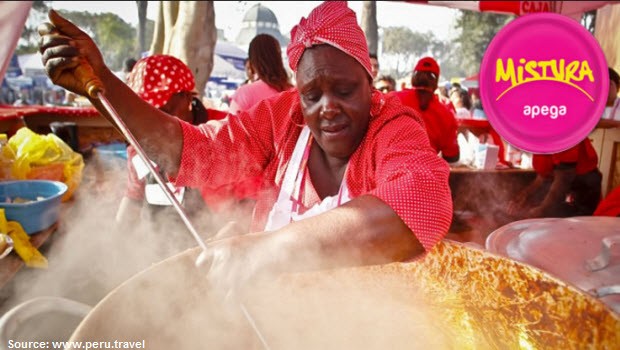 Mistura 2011 – Peruvian cuisine at its finest – with hotel pickup
Mistura 2011 – Peruvian cuisine at its finest – with hotel pickup  Recap of Gelinaz! Pulpo Fiction
Recap of Gelinaz! Pulpo Fiction